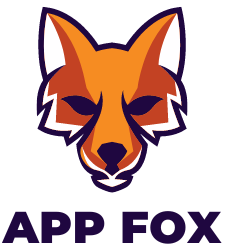The 5 Best Employee Recognition Software in 2024
1. Bonusly
- Easy-to-use interface for seamless employee recognition and rewards
- Customizable reward options to fit your organization's culture
- Real-time feedback and engagement tracking to boost morale and productivity

Bonusly is a powerful employee recognition and rewards platform designed to enhance workplace culture and boost employee morale. With intuitive features and customizable options, Bonusly offers a seamless solution to elevate employee engagement and productivity.
Discover the impact of real-time feedback and engaging rewards on your organization's success with Bonusly.
2. Nectar
- Real-time network monitoring for quick issue detection
- Customizable dashboards for personalized insights
- Scalable architecture to accommodate growing network infrastructure
- User-friendly interface for easy navigation and configuration

Nectar is a powerful network monitoring tool designed to provide real-time insights into your network infrastructure. With customizable dashboards, scalability, and user-friendly interface, it's the ideal solution for businesses of all sizes.
Gain comprehensive visibility and control over your network with Nectar's advanced features and customizable options, ensuring a stable and reliable network environment.
3. Mo
- Easy to use, cloud-based video AI generator
- Ability to create high-quality videos from articles or scripts
- Automatic video captioning and summarization

Mo AI tool is a cloud-based video AI generator that simplifies the creation and editing of high-quality videos from textual content. With features like automatic video captioning and summarization, Mo AI tool is a valuable resource for businesses and individuals looking to enhance their video marketing efforts.
4. Guusto
- Customizable recognition programs
- Global recognition capabilities
- Automated reward system

Guusto is an innovative employee recognition software that offers customizable recognition programs, global recognition capabilities, and an automated reward system. With intuitive features and flexible pricing plans, Guusto enhances employee engagement and satisfaction, fostering a culture of appreciation and motivation within your organization.
5. Empuls
- Streamlined employee recognition process
- Customizable rewards and incentives
- Robust analytics and reporting capabilities

Empuls is an innovative employee recognition software that facilitates seamless employee appreciation and rewards. Its customizable incentives, robust reporting, and user-friendly interface make it a top choice for businesses aiming to elevate their workplace engagement.
With Empuls, companies can effectively build a culture of recognition, motivation, and appreciation, leading to improved employee satisfaction, productivity, and overall workplace dynamics.
FAQ
What are the key features to consider when choosing employee recognition software?
When choosing employee recognition software, it's crucial to consider the user interface and user experience to ensure seamless adoption by employees. Additionally, integration capabilities with existing HR systems should be a priority to ensure smooth functionality.
Other key features to consider include customization options, reporting and analytics capabilities, and multi-channel recognition to suit diverse employee preferences.
How can employee recognition software impact employee engagement and retention?
Employee recognition software plays a crucial role in boosting employee engagement by providing a platform for timely and personalized recognition, which can enhance employee morale and motivation.
Furthermore, the positive impact on employee retention is evident when employees feel valued and appreciated, leading to increased loyalty and decreased turnover rates.
What security measures should be considered when implementing employee recognition software?
Implementing employee recognition software requires robust security measures such as data encryption to protect sensitive employee information. Additionally, access control and user authentication mechanisms are essential to safeguard the confidentiality of employee data.
It's also crucial to ensure compliance with data protection regulations to maintain the privacy and security of employee information.
How can employee recognition software contribute to a positive company culture?
Employee recognition software contributes to a positive company culture by reinforcing a culture of appreciation and acknowledgment for employee contributions. This fosters a sense of belonging and camaraderie among employees, leading to a more cohesive and supportive work environment.
Moreover, the transparency and visibility offered by the software promote a culture of fairness and meritocracy, enhancing trust and morale within the organization.
What are the best practices for implementing employee recognition software effectively?
Effective implementation of employee recognition software involves clear communication and training to ensure that employees understand the purpose and functionality of the platform. Additionally, ongoing evaluation and feedback from users help to fine-tune the software to meet evolving recognition needs.
Furthermore, aligning the software with organizational values and goals and celebrating success stories and best practices are essential to maximize the impact of the recognition software.

FAQ
When choosing employee recognition software, it's crucial to consider the user interface and user experience to ensure seamless adoption by employees. Additionally, integration capabilities with existing HR systems should be a priority to ensure smooth functionality.
Other key features to consider include customization options, reporting and analytics capabilities, and multi-channel recognition to suit diverse employee preferences.
Employee recognition software plays a crucial role in boosting employee engagement by providing a platform for timely and personalized recognition, which can enhance employee morale and motivation.
Furthermore, the positive impact on employee retention is evident when employees feel valued and appreciated, leading to increased loyalty and decreased turnover rates.
Implementing employee recognition software requires robust security measures such as data encryption to protect sensitive employee information. Additionally, access control and user authentication mechanisms are essential to safeguard the confidentiality of employee data.
It's also crucial to ensure compliance with data protection regulations to maintain the privacy and security of employee information.
Employee recognition software contributes to a positive company culture by reinforcing a culture of appreciation and acknowledgment for employee contributions. This fosters a sense of belonging and camaraderie among employees, leading to a more cohesive and supportive work environment.
Moreover, the transparency and visibility offered by the software promote a culture of fairness and meritocracy, enhancing trust and morale within the organization.
Effective implementation of employee recognition software involves clear communication and training to ensure that employees understand the purpose and functionality of the platform. Additionally, ongoing evaluation and feedback from users help to fine-tune the software to meet evolving recognition needs.
Furthermore, aligning the software with organizational values and goals and celebrating success stories and best practices are essential to maximize the impact of the recognition software.